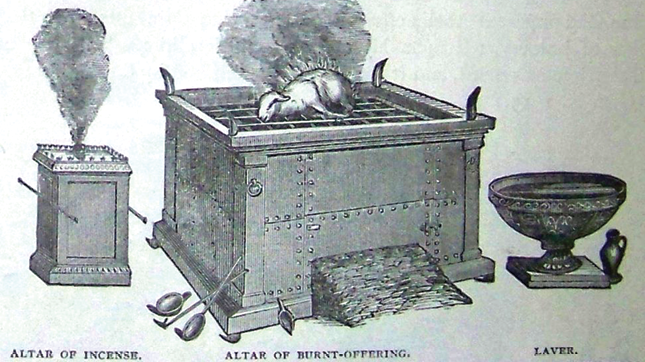In a modern society like ours, the use of fire is not what it used to be. In fact, there’s more of a tendency to protect ourselves from its harmful effects with smoke alarms, fire extinguishers, and 911 calls to the local fire department. In ancient Israel, however, fire was a daily source of heat, light, baking, and cooking. It even had a religious use at the altar of the Tabernacle and the Temple in Jerusalem. Especially with the whole burnt offerings of Leviticus 1, God was revealing the sobering, saving truth of His holy Law and His Gospel promises in a way that engaged the eyes, the hands, and even the nose of all the worshipers involved.
Long before the whole burnt offerings were commanded in Leviticus, the Lord sent fire and brimstone in consuming judgment on the wicked cities of Sodom and Gomorrah. That event helps illustrate the principle at work in Isaiah 66:15-16: “For behold, the Lord will come with fire and with His chariots, like a whirlwind, to render His anger with fury, and His rebuke with flames of fire. For by fire and by His sword the Lord will judge all flesh.” The same connection of God’s judgment and unrestrained fire can be found in New Testament passages referring to the Lord as “a consuming fire” (Hebrews 12:29), Who confines His enemies eternally in the “lake of fire.” (Revelation 20:14-15)

It’s no surprise, then, that fire was such a definitive feature of the burnt offerings described in Leviticus 1. Not only was the animal to be without blemish and offered in place of the person who sinned against God; it was to be completely consumed by fire on the altar. The entire ritual was a powerful picture of the holy Lamb of God Whose atoning blood would be offered at the altar of the cross in the place of all sinners and for the forgiveness of all sins. As for the burning fire itself, this part of the burnt offering portrays the divine truth that the wrath of God’s judgment would fall on the innocent One sacrificed instead of the guilty one who had incurred God’s wrath.
Actual fire was not included in the Good Friday sacrifice of Jesus. Nevertheless, though His body was not burned, He would experience something far worse: the full suffering of God’s wrath poured upon Him. In Gethsemane He even prayed about it earnestly with the “cup” metaphor of Matthew 26:36-42. At an earlier time, He spoke of His looming sacrifice on the cross as “fire” and “baptism” in Luke 12:49-50: “I came to send fire on the earth, and how I wish it were already kindled! But I have a baptism to be baptized with, and how distressed I am till it is accomplished!” As one commentator put it, “Like the whole burnt offering . . . so frequent in the Old Testament, Jesus is to be offered up for the sin of the world, as the fire of the Father’s wrath is laid on him.” (A. Just, Jr., Concordia Commentary: Luke, page 524)
The Israelite worshiper certainly got his hands dirty and bloody when he prepared the animal as directed. Then with the priest performing the rest, he saw the sacrificial blood applied at the altar and the slaughtered animal placed on the fire. As he watched it burn up, the smoke and the smell would bring the ritual to an end as a “sweet aroma to the Lord.” (Leviticus 1:9, 13, 17) The dispensing of God’s judgment was not to the extent of the scene yet to come. Jesus would absorb for all people God’s complete judgment for all sin so that with the Father’s justice fully met, His Son could be raised from the dead. Thus, God’s consuming fire in the form of Christ crucified has become God’s forgiveness in the form of Christ risen forever, the only “Lamb of God who takes away the sin of the world.” (John 1:29)

is a professor at Immanuel Lutheran College in Eau Claire, Wisconsin.

